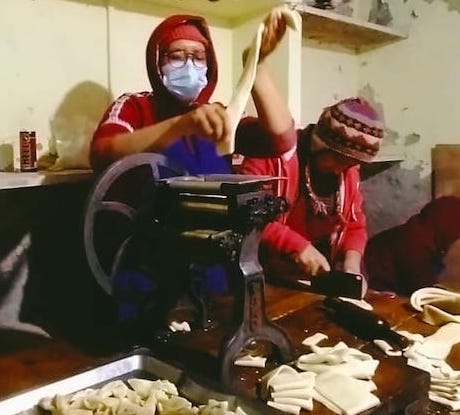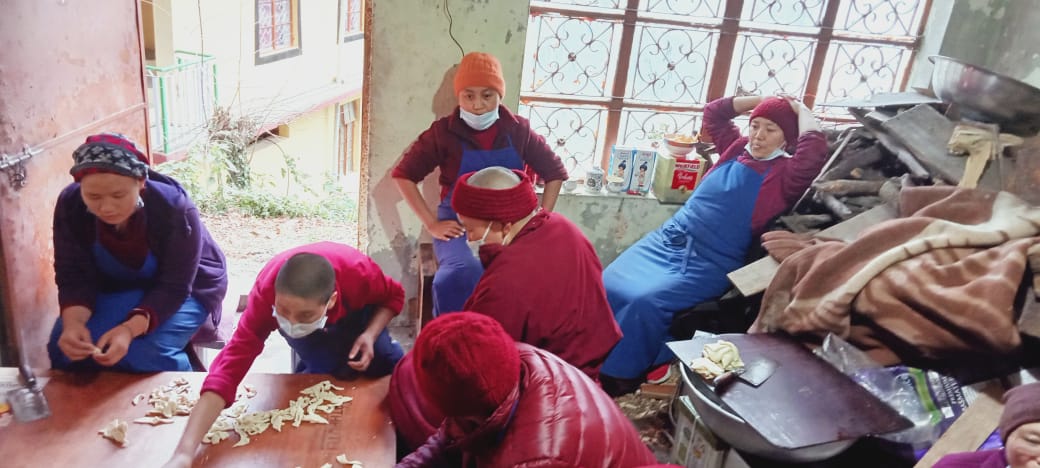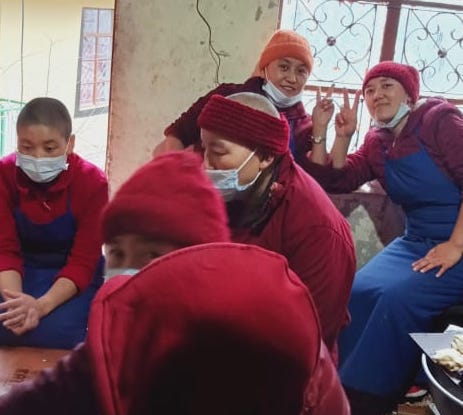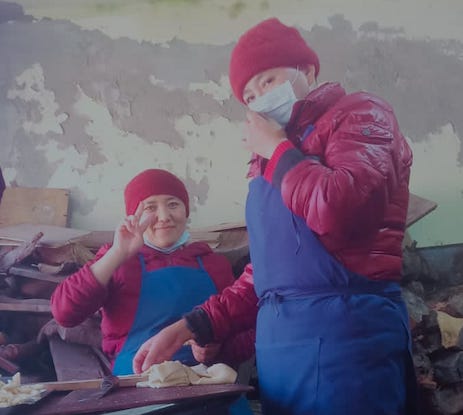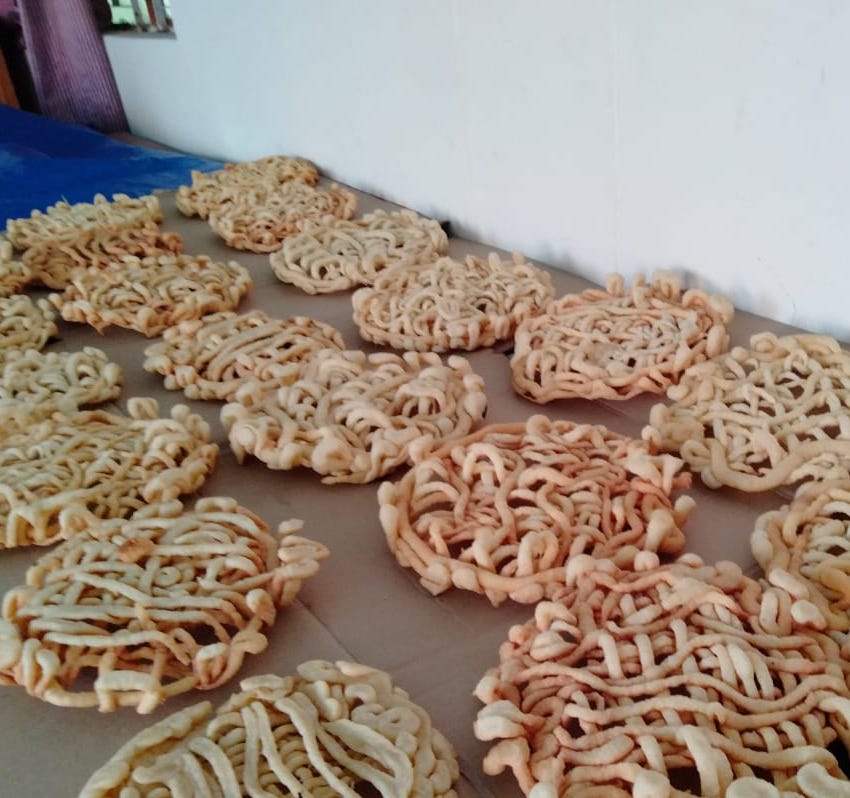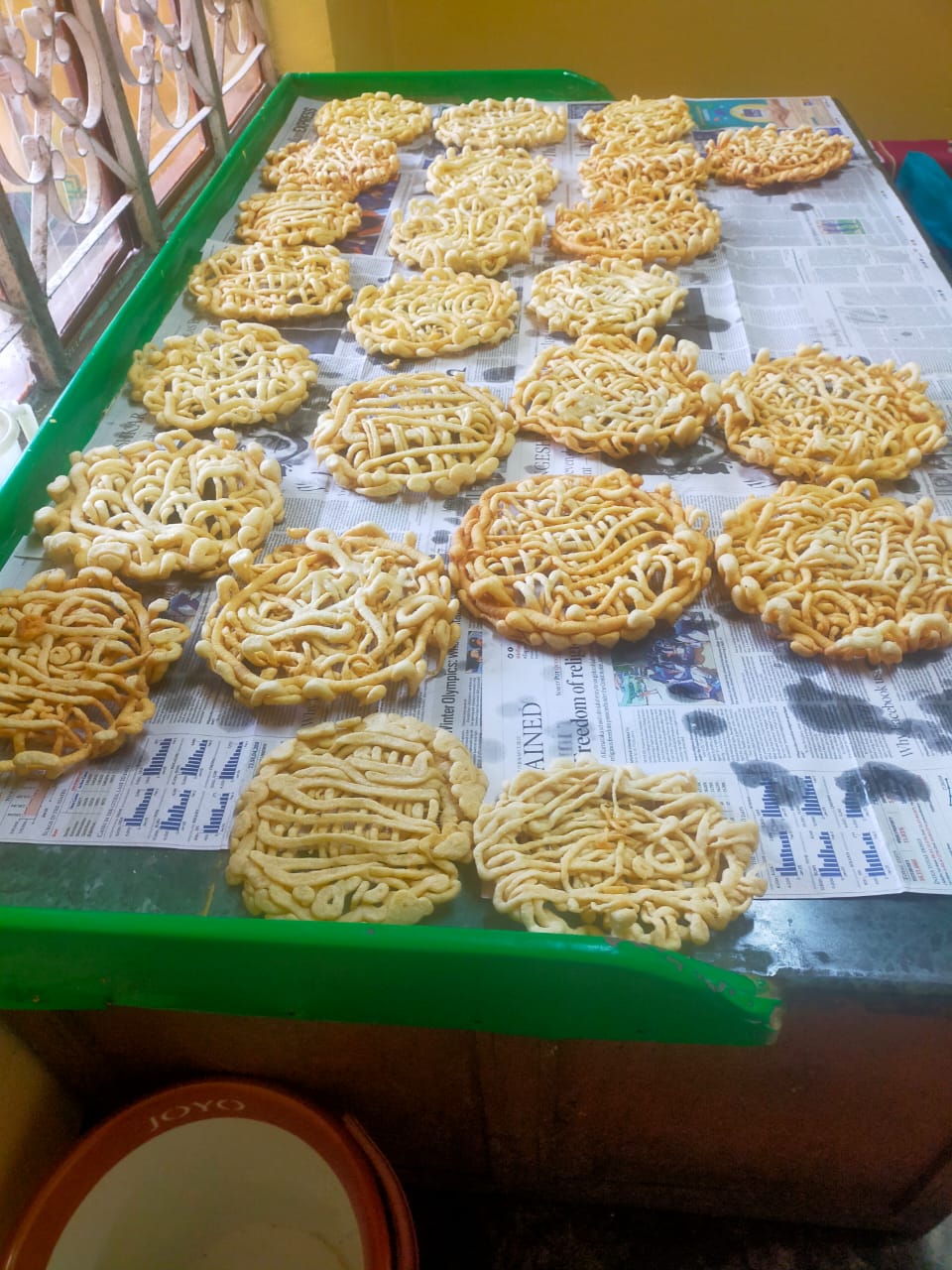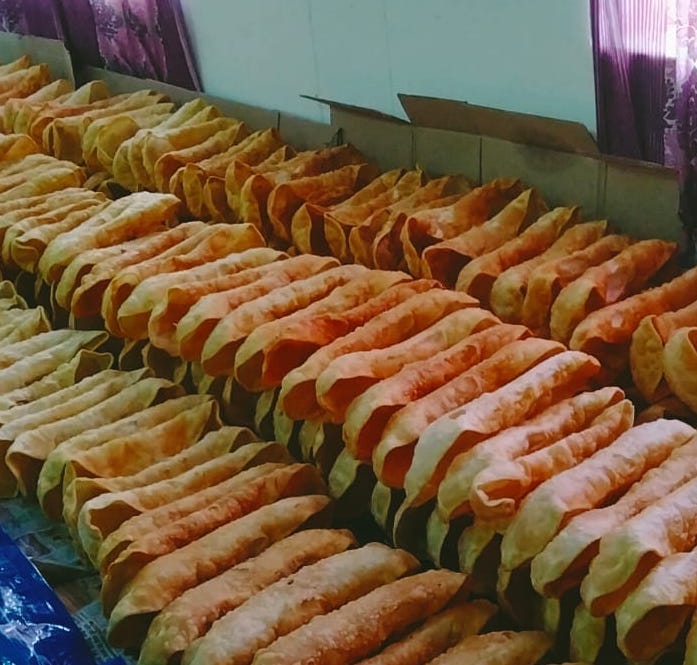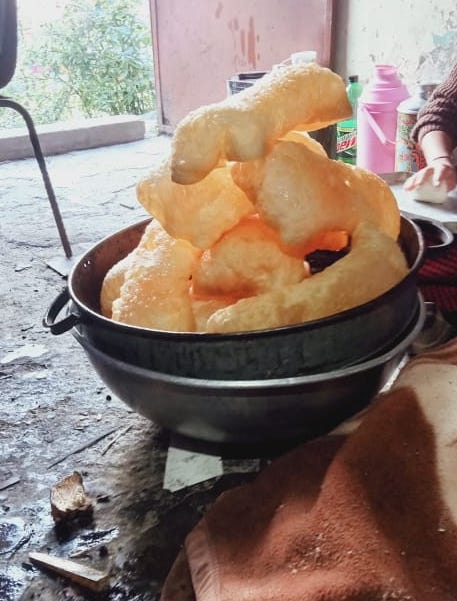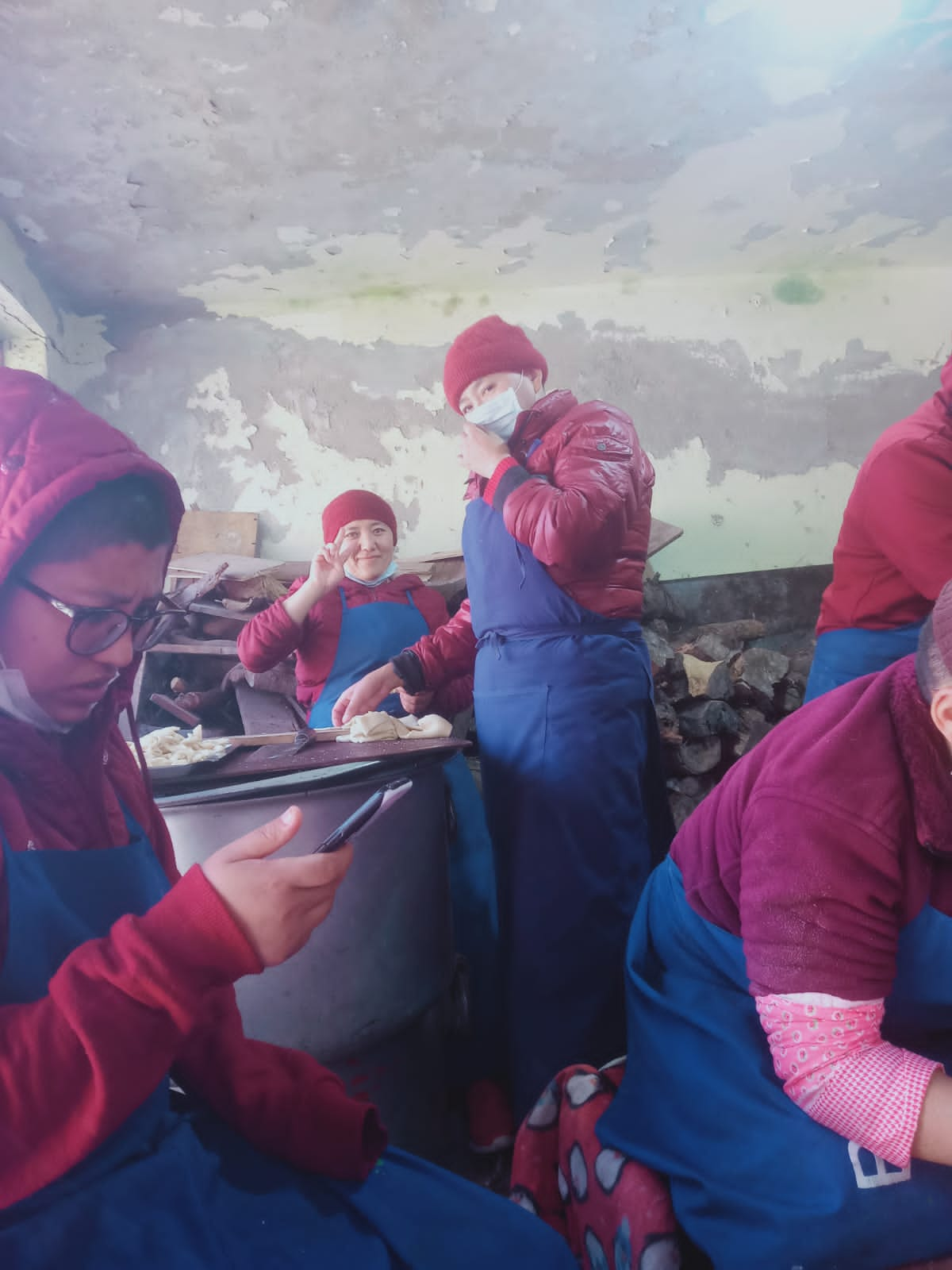We are happy to share recent photos by the nuns of daily life at Shugsep Nunnery and Institute and hope they bring you joy.

Some of the 90 Tibetan Buddhist nuns at Shugsep Nunnery and Institute, a nunnery built and completely supported by supporters of the Tibetan Nuns Project.
Shugsep, a Nyingma nunnery re-established in northern India, is now home to 90 Tibetan Buddhist nuns. We are very grateful to everyone who sponsors nuns and hope these photos help show the impact of your support. More sponsors are always needed and the cost is just $1 a day.
Summer Rain Retreat
From late July to early September, the nuns practiced the six-week Summer Rain Retreat, known as Yar Ney in Tibetan (དབྱར་གནས།). This annual retreat dates back 2,600 years to the Buddha and holds profound significance in the monastic calendar.

A sacred procession of nuns carrying a Buddha statue and sacred texts. The Summer Rain Retreat is a time of intensive study and practice.
The Buddha instructed monastics to stay in one place during the monsoon rains because travel was difficult and to prevent harm to the many living things that emerge in the rainy season. The Summer Rain Retreat is a time for the monastic sangha to gather, deepen their understanding of the teachings, and uphold the traditions taught by the Buddha.

The nuns at Shugsep carrying sacred scriptures. Unlike Western books, the pages of Tibetan Buddhist texts are long, loose, stacked between two cover boards, and wrapped in protective cloth.
The first day of the retreat begins with a special puja. Special Vinaya vows are taken which the nuns observe throughout the six weeks. Next, accompanied by horns and other sacred musical instruments, the nuns proceed in a single-file procession.

Photos from September 2024 showing the nuns playing sacred Tibetan music during a puja. Left to right, they play the gyaling, a reed instrument, somewhat like an oboe, brass cymbals, and conch shells.
Special pujas also mark the conclusion of the retreat. These sacred rituals have been orally transmitted from teacher to disciple for generations and, thanks to your support, are preserved by the nuns.
Progress on the Shugsep Retreat Center
Work is progressing on the Shugsep Retreat Center but funds are still needed. Retreat is an essential element of Buddhist practice, but without a dedicated space at the nunnery, the nuns are forced to travel to Nepal or the caves at Tso Pemo to go on retreat.

The retreat center at Shugsep is under construction though funds are still needed to complete this big project. Fundraising began in 2022.
Shugsep is a Nyingma nunnery that traces its rituals and practice to some of the most illustrious female practitioners in Tibetan history. Fifty-nine senior Shugsep nuns now hold Lopon degrees, the highest degree in the Nyingma tradition, similar to an MA. These senior nuns are the teachers and leaders of the future and need a place to practice retreat to become fully qualified teachers and preservers of their ancient tradition.

The nuns are helping with the construction of the Shugsep Retreat Center.
Funds are still needed to complete this big project! Please donate here.
Winter Robes
In 2024, the Shugsep nuns received 92 sets of winter robes. The nuns send their deep gratitude for the robes which will help them through the cold winter months.

Thank you to those who donated to purchase 92 winter robes for the nuns. The presentation of materials for robes is a powerful act of devotion and respect and is believed to have beneficial karmic effects.
None of the nunneries are heated. Shugsep, in the foothills of the Indian Himalayas, gets very cold in winter. The average temperature in January ranges from 50°F (10°C) to 31°F (-0°C). The new robes will be very helpful, especially during prayers because the nuns are not allowed to wear coats or sweaters in the prayer hall as per monastic rules.

Thank you to all the sponsors of nuns! More sponsors are always needed.
Preserving Ancient Wisdom Traditions
Many of the senior nuns came from the original Shugsep Nunnery in Tibet. After being expelled from their nunnery by Chinese authorities, they escaped to India to freely practice their religion.

The nuns in India are preserving Tibet’s ancient teachings and culture. Shugsep Nunnery in Tibet was once home to one of the most famous female teachers, Shugsep Jetsunma.
Every Sunday night, the Shugsep nuns practice a special ritual called Chöd (pronounced chö). It is also known as “The Beggars Offering” or “Cutting Through the Ego.”

A nun hits a large drum during a puja at Shugsep Nunnery.
Chöd, which means “cutting through”, is a spiritual practice that aims at cutting through the hindrances of self-cherishing thought and ignorance. These are the greatest obstacles on the path to enlightenment.
In the Chöd ritual, practitioners visualize symbolically offering their bodies, for the sake of others, as a tantric feast to sentient beings. This is a brave way to exchange oneself for others and develop compassion, and a quick method to realize emptiness.

Young nuns carrying mani stones with the mantra “Om mani padme hum”. The mani stones are arranged along the new kora or circumambulation pathway where the nuns walk every day..
Your donations to the Tibetan Nuns Project strengthen and preserve Tibetan culture and religion – under great threat due to the occupation of Tibet. By educating and empowering these dedicated women you are creating teachers and leaders of the future. The whole world will benefit. Thank you!





























